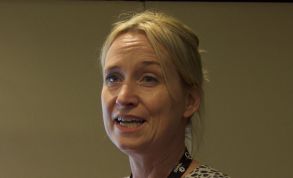HFMA 2018: Big data can target unwarranted variations
NHS Business Services Authority chief insight officer Nina Monckton (pictured) told a workshop on the opening day of the conference that it had analysed some of the information it holds. The BSA’s annual budget is £35bn and covers spending across primary care prescriptions, the NHS pension fund and anti-fraud activity.

‘The question is, how do we make best use of all the data so it benefits not only our organisation but also the wider NHS,’ she said.
The BSA worked with Oracle to employ big data and a small data lab was established to prove the concept. In the first six months it found more than £100m in potential savings.
Highlighting some of areas it examined, Ms Monckton said the methodology could be useful in tackling fraud, for example where pharmacists are claiming out-of-pocket expenses. In cases where pharmacists are finding it difficult to source a drug through their normal routes, they may find it from other suppliers and claim back the cost. ‘You don't expect to see it [out-of-pocket expense claims] very often, but some pharmacists do it and some do it a lot,’ she said.
There may be genuine reasons for this – small, independent pharmacies may not have the same access to supplies as their larger counterparts, for example. But identifying the information meant questions could be asked. She added: ‘It’s a small number – £200,000 a year – but the question is, is there a better way of doing this?’
Some patients were found to be getting prescriptions from GP practices in more than one clinical commissioning group – helping them get more drugs because they are addicted or to sell to others. ‘It might be genuine or it could be patient manipulation, but we have passed on 11 cases for the fraud team to investigate.’
The data lab has also looked at the rise in the number of items prescribed – up 40% over the last decade. Ms Monckton said that the cost of drugs in most clinical areas was plateauing or even falling slightly, in some they were rising, potentially offering new opportunities for savings.
The team estimated that 45 million people receive a prescription each year – when broken down it found that, for example, prescriptions for 42% of patients cost less than £25; but 5.3% cost more than £1,000 a year. Though it does not see patient identifiable details, it found that 22 patients’ prescriptions cost more than £100,000 a year.
Related content
The Institute’s annual costing conference provides the NHS with the latest developments and guidance in NHS costing.
The value masterclass shares examples of organisations and systems that have pursued a value-driven approach and the results they have achieved.